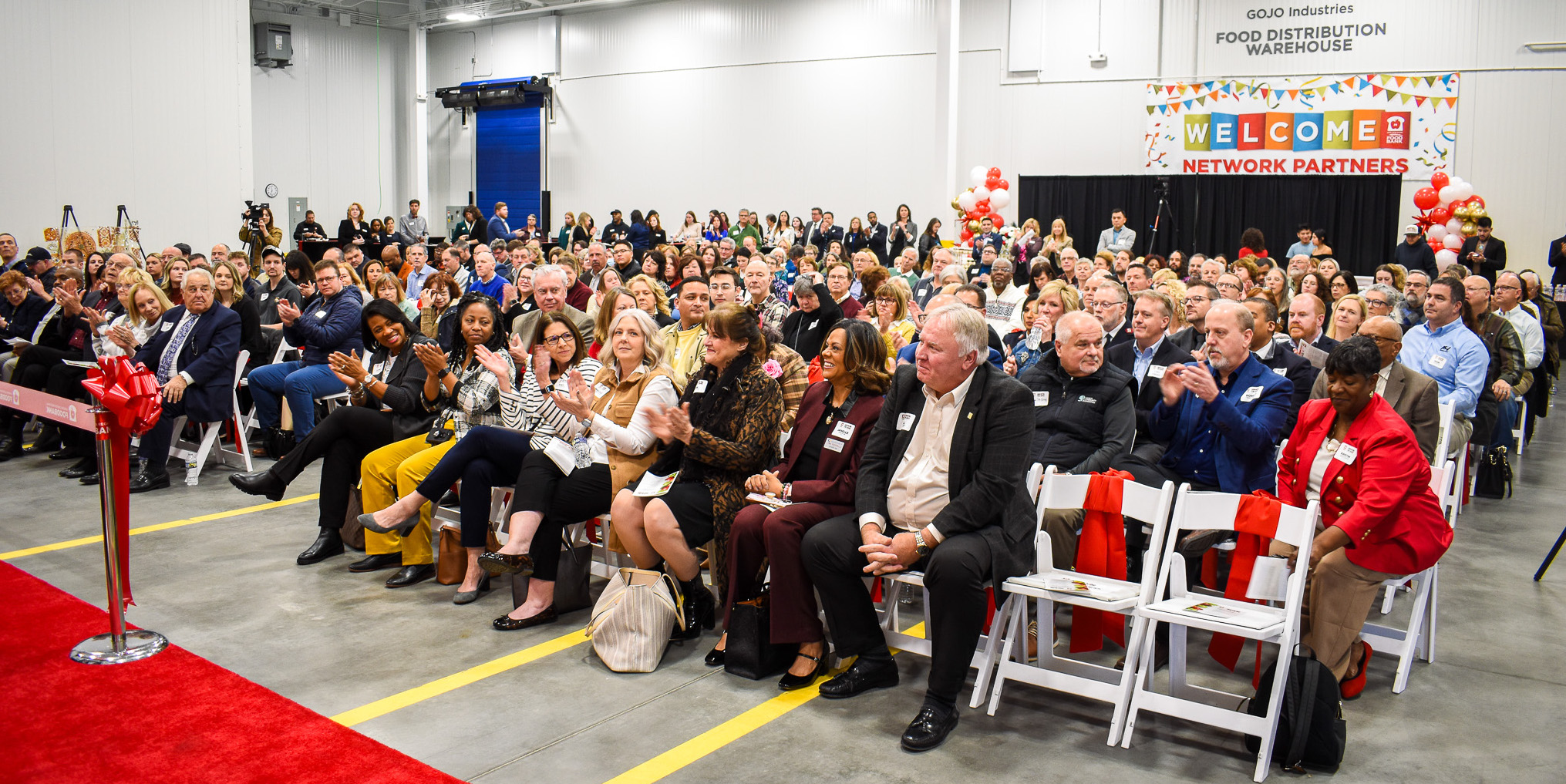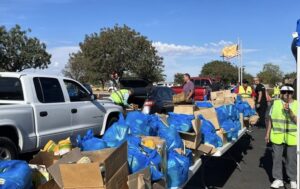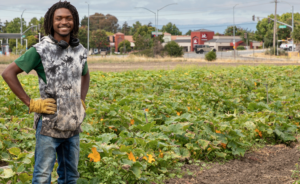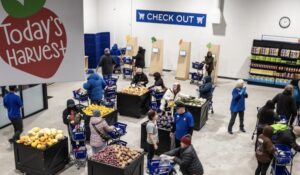Without input from the community, the renovation of Akron-Canton Regional Food Bank’s main warehouse, unveiled last week, probably would have turned out a little differently.
In improving the warehouse, the food bank employed the same strategy it had when it constructed a brand new warehouse in another location in 2021. It solicited feedback from the community on what it would like to see in the new space.
At both warehouses, the food bank’s goal was to co-locate a grocery-store style pantry plus other wrap-around services besides food to create a one-stop shop for community members to meet a wide range of social needs. Engaging the community to figure out the exact nature of those non-food social services was a high priority.

“We’re really acknowledging that people with lived experience are the experts,” said Katie Carver Reed, Vice President. “They’re the ones walking through the line and oftentimes have really great ideas on ways that we can adjust and be better.”
Before opening its Stark County Campus in 2021, the food bank had taken part in a project with Urban Institute called Pathways for Community Voices, which emphasized participatory research through surveys, focus groups and direct communication with neighbors. The food bank employed learnings from that model in both the construction of its 40,000 square foot campus in Stark County and the just-completed addition of 15,000 square feet to its main warehouse in Akron to create a 100,000 square-foot facility. Together, the projects cost $17.5 million.
In Stark County, Carver Reed estimates the food bank engaged with about 1,000 community members over the course of 18 months of surveying, knocking on doors, and hosting events such as a cookout. A main line of inquiry had to do with the non-food support that neighbors would like to see paired with the food bank’s offerings.
Those conversations led it to include a range of social services, including a law firm that serves the legal needs of low-income individuals; a local health department to support infant health; a hospital to do medical screenings, and a variety of workforce development services, such as resume writing, job interviewing skills and a wardrobe for interview clothes.
“We’ve had about 1,200 neighbors connect with one of those resources throughout the course of this year,” Carver Reed said.
The food bank used the same game plan in the renovation of its main warehouse in Akron and, somewhat surprisingly, ended up with a different set of services. “We heard a lot about mental health support in Akron and that didn’t come up when we were building our Stark County Campus,” Carver Reed said. “Different communities have different needs,” she noted, adding that the food bank was pleased to be able to secure a partnership around counseling and mental health for the Akron facility.
The food bank’s wraparound strategy adds fuel to a growing trend among food banks to provide easy access to other social services alongside food. Greater Cleveland Food Bank, for example, in November opened a Community Resource Center that provides permanent space to 15 other nonprofit social service agencies (see our story here). Feeding Tampa Bay is expected to soon open its Opportunity Hub, in which 50% of the non-warehouse space will be dedicated to a variety of community partners (see our story here).
Akron-Canton Regional Food Bank’s approach is a bit different in that its community partners do not have permanent space at its warehouses. Rather they set up temporary tables inside the food markets on a regularly rotating schedule.
Looking forward, Akron-Canton Regional Food Bank intends to continue with neighbor engagement. About every quarter it hosts events, such as cooking demonstrations or food tastings, and takes the opportunity to solicit more feedback. “It’s about continuous engagement and not just in the design phase, but in that constant refinement of any program that you operate,” Carver Reed said.
The food bank would also like to scale its community partnership model out to some of the 600 agencies in its network. Especially for strong agency partners in rural areas, the food bank would like to demonstrate how to reach out to neighbors and other nonprofits in the community. It has already helped a few agencies with training and some survey work out in the field.
Noted Carver Reed, “It’s really important to pause and to ask meaningful questions from the people receiving food assistance, because we have a lot to learn from their experiences.” – Chris Costanzo
CAPTION FOR PHOTO, TOP: At the unveiling of the renovation of the food bank’s main warehouse in Akron last week.
Like what you’re reading?
Support Food Bank News














